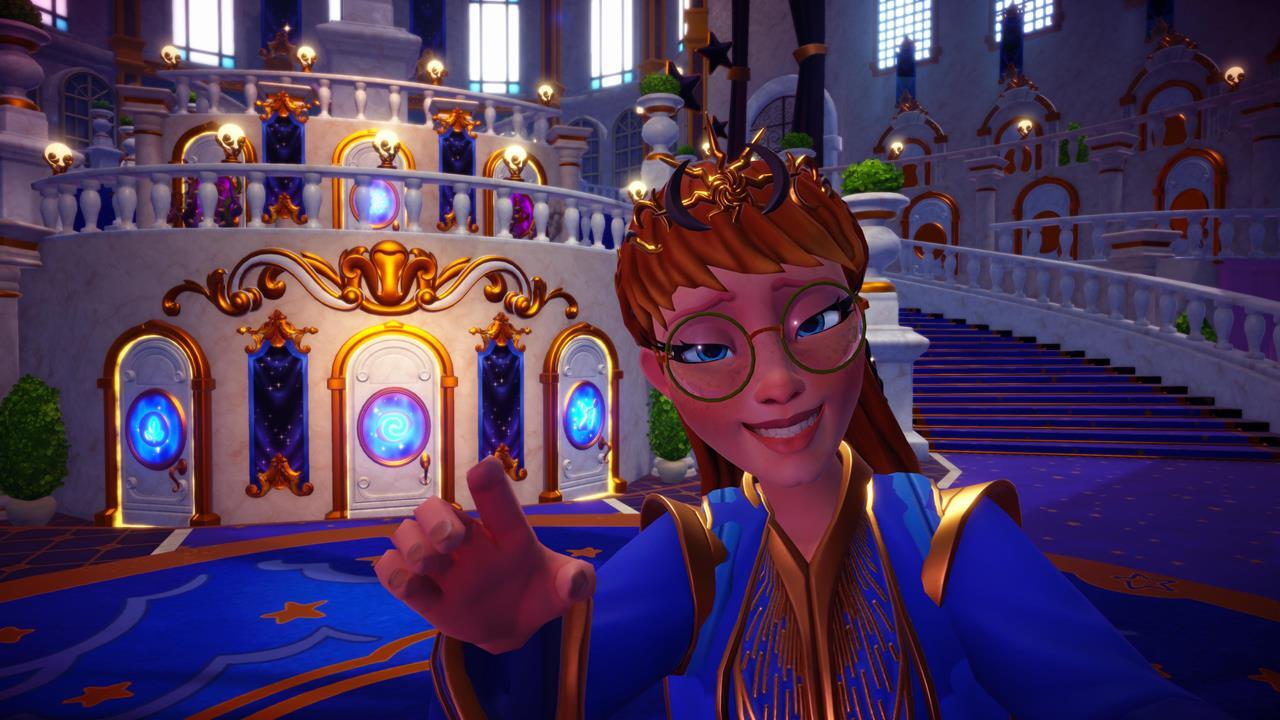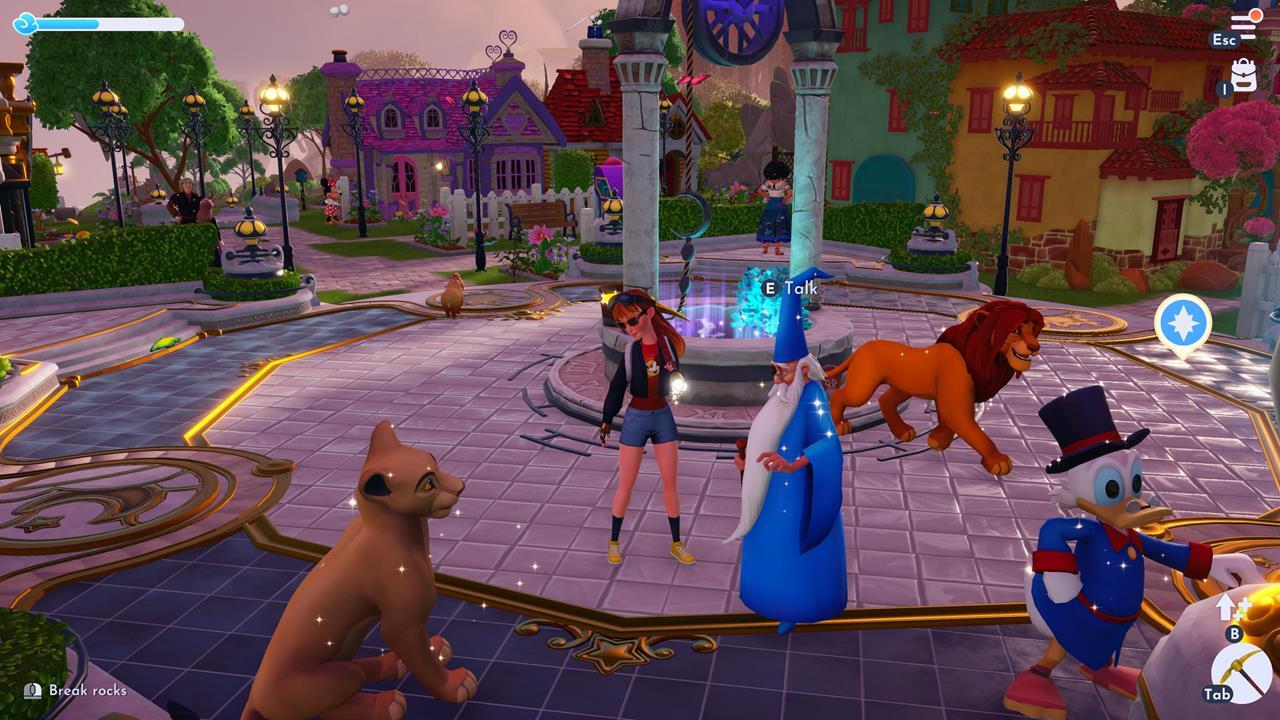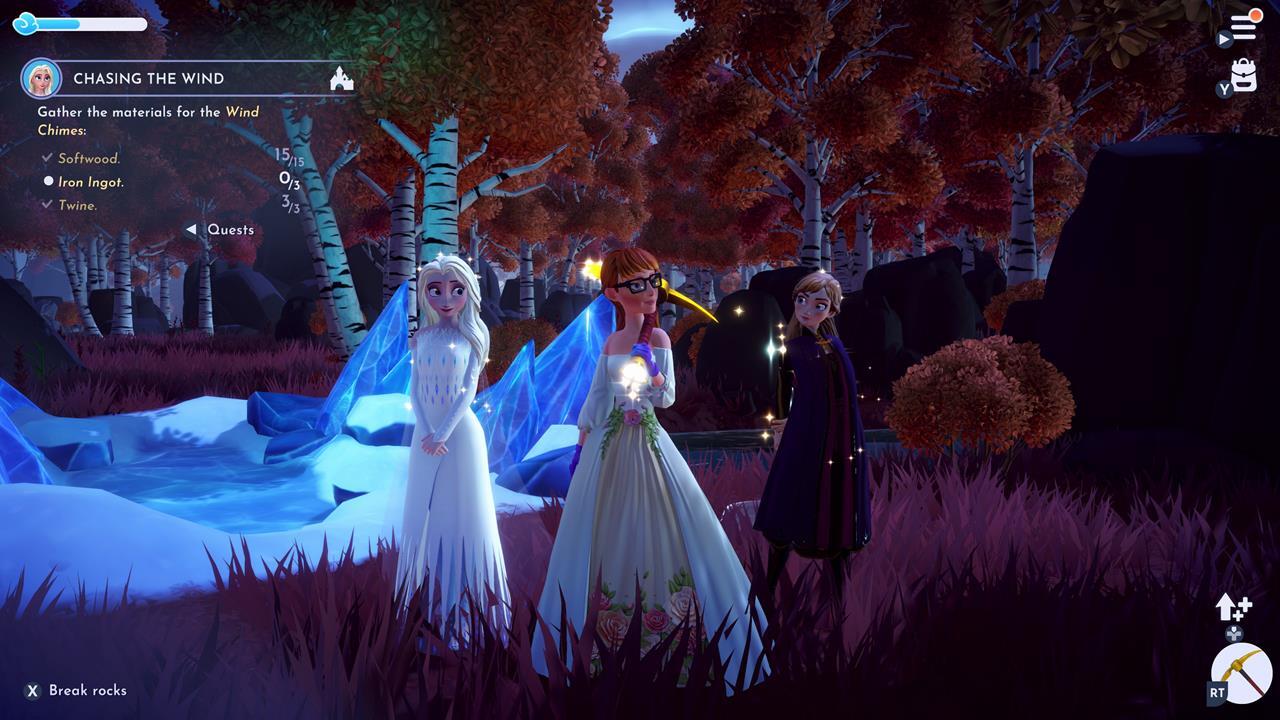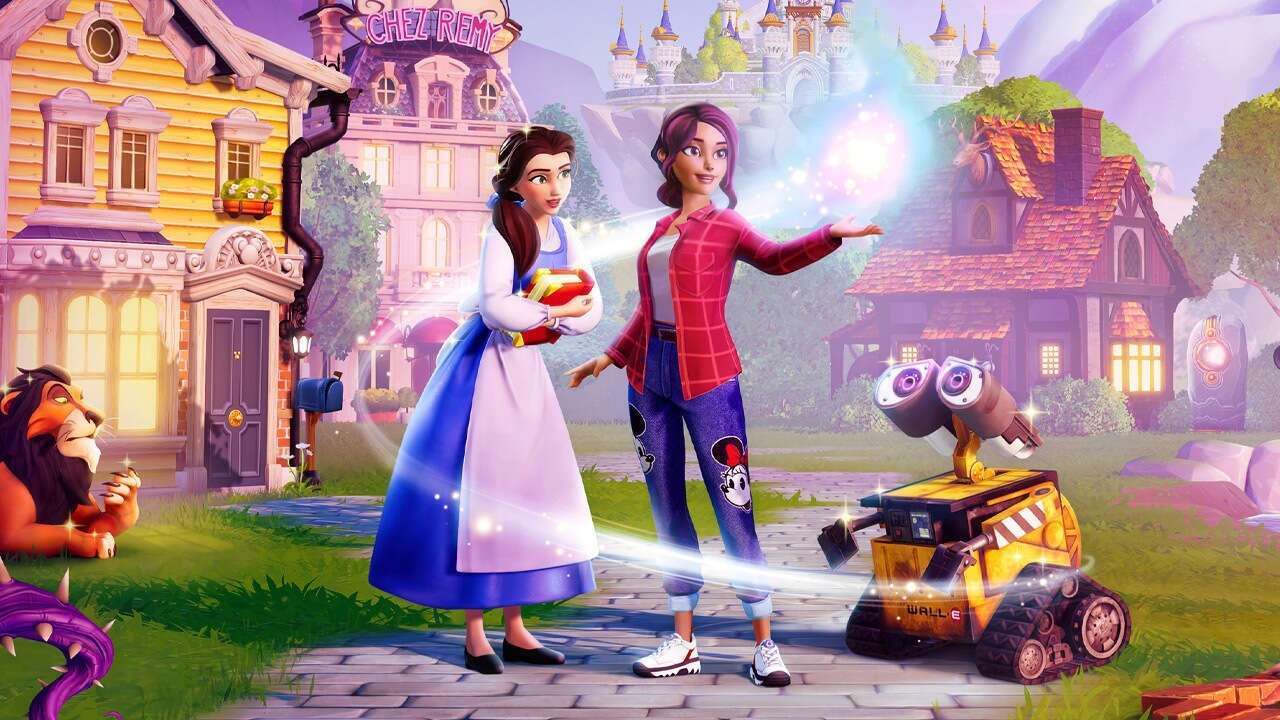I was a bit apprehensive before playing Disney Dreamlight Valley. Although I’ve been a huge fan of Disney’s animated films since I was a kid, developer Gameloft is primarily known for developing mobile titles, some of which have egregious microtransaction systems, such as Disney Magic Kingdoms. After playing Disney Dreamlight Valley for roughly 30 hours, I realized that it wasn’t microtransactions that I had to be concerned about, as there were no paywalls or progress-blocking instances that required me to pay cash. The more prevalent issues with the game were the extremely grindy progression system and restrictions coming from the real-time systems.
Disney Dreamlight Valley begins just as my character was whisked away into a magical fantasy kingdom. Approached by Merlin, it was revealed that a curse known as the Forgetting turned the once-whimsical land into a realm of despair and darkness. Merlin provides a tutorial through the basic mechanics such as removing obstacles called Night Roots and using tools like the pickaxe, shovel, and fishing pole.
At first, I was worried since regular tasks like mining ores with the pickaxe or removing clumps of roots quickly drained my character’s stamina. My initial concerns were quickly assuaged, as stamina is regularly refilled whenever I leveled up, ate food, or spent just a few seconds in my character’s home.
Needless to say, I was surprised at how player-friendly this mechanic is. From here, the game opens up, as you collect more resources used to craft new items, find ways to decorate the village, and sell materials to earn additional coins. The village itself can be redesigned to your fancy, as you can move around buildings and objects to make way for other structures.

The best part about Disney Dreamlight Valley is its inclusion of fan-favorite characters, along with their respective themes or locations. The initial batch consists of Merlin, Mickey, Goofy, and Scrooge McDuck (Goofy and Scrooge act as vendor NPCs, too), but you soon gain access to the Dream Castle, which has portals that lead to realms populated by other notable characters from Disney and Pixar films. These include Simba, Nala, and Scar (The Lion King); Moana and Maui (Moana); Ariel, Eric, and Ursula (The Little Mermaid); Elsa, Anna, Kristoff, and Olaf (Frozen); Mirabel (Encanto); and many more.
These short romps have fairly straightforward tasks, such as planting crops in a dried-up oasis to help Nala trap the hyenas, which then led to using the shovel to find bugs that she and Simba could eat. In Moana’s case, you collect resources to repair her boat and then remove obstacles so you can sail to another area together. The vast majority of quests in Disney Dreamlight Valley lean more toward the easy or leisurely side of things, but there were also a few tricky puzzles which I liked.
Completing quests in these mini-realms allows the corresponding characters to be recruited to your village, where they become villagers or potential companions. They also provide a source of additional side quests after befriending them by giving them gifts. For example, after Kristoff moved to the village, I found him in the forest biome where he gave me a quest to rescue Donald Duck in a portal zone.
This gameplay loop–one where you meet characters, max out their friendship levels to unlock new quests, leading you to meet even more characters–kept me engaged. As I ventured forth into certain areas, I also wanted to tackle the tasks therein, and perhaps gain new villagers or companions along the way. My village, once a rundown and cursed place, eventually became a busy locale, full of people just milling about and interacting with one another. Interactions that added to the ambience and atmosphere also happened regularly. For example, characters like Ursula and Ariel might show up while I was fishing, or Simba and Nala might play around only for Merlin to scold them. These ambient interactions also include photo mode, which causes characters to pose for selfies. There truly were moments in Disney Dreamlight Valley that gave me a sense of wonderment as I recalled my younger days of first seeing some of these characters, thinking of what it’d be like if they were all in the same place.

Sadly, Disney Dreamlight Valley has its own share of fundamental issues. Chief among these is that the overall progression of unlocking realms and characters, while also doing quests, remains unclear and downright confusing. This is compounded by realm and biome unlocks that primarily require a currency called Dreamlight, which often comes from general tasks listed in a panel. Examples include mining X number of rocks/ore deposits in Y biome, preparing a certain number of meals, bringing gifts, adding decorations in a particular biome, catching/cooking/selling different kinds of fish (sometimes in a specific biome), buying/planting specific types of seeds (and harvesting them), and many more.
I recall when I amassed a lot of Dreamlight to unlock a new realm in the castle. Although biomes and realms have their respective Dreamlight costs, I opted to prioritize the slightly more expensive Frozen Realm. I met up with Elsa and Anna and thought I’d be done with the objectives in a jiffy. Unfortunately, I needed Iron Ore to progress. It just so happened that Iron Ore comes from other biomes in the village that I hadn’t unlocked yet. That meant I had to redo the aforementioned gathering and mining tasks to earn more currency.
This checklist-based approach turned what could’ve been a grand adventure into monotonous drudgery. While there’s no strict method of progression, there’s still an optimal one. A single mistake–unlocking realms in the wrong order–was all it took to turn my relaxing playthrough into a by-the-numbers grind where I repeatedly looked at the Dreamlight panel to ensure that I could still amass as much currency as possible. In other instances, I accidentally used a material for a particular task or craftable item, not knowing that it’s also needed for various quests. The biggest factor that bars progress now is something none of us can avoid: time.


The in-game time in Disney Dreamlight Valley is synced with your local real-world time. Certain crops need to be watered repeatedly, and you can only harvest them after many minutes have passed. In other cases, you might run out of a particular resource, only to realize that these nodes also won’t respawn until later.
Worse, characters follow a particular schedule. You might see them roaming around the village, in which case you’d be able to talk to them, give gifts, do quests, or ask them to hang out with you (which nets you bonuses based on an assigned task). However, if they’re asleep, you have no choice but to wait, as there’s no in-game option to advance time. Although it’s possible to set your system clock further ahead, doing so can cause adverse effects, such as mineral/resource nodes no longer appearing.
There were instances when I could only play late at night and found the NPCs that I wanted to interact with weren’t available, as each one followed a predetermined schedule. While this added a degree of reality to the village, it just didn’t make sense that I had to adjust my schedule because Buzz Lightyear and Mirabel are asleep from 10 PM. to 2 AM These restrictions negatively impacted my progress and enjoyment with the campaign overall.
In the end, Disney Dreamlight Valley still managed to captivate me thanks to its wonderful cast of characters and their magical worlds. The cozy life-sim concept allows you to gather, farm, and build at a leisurely pace. Unfortunately, I was also disappointed by the decision to have a real-time sync feature and an unclear progression path that’s compounded by repetitive tasks. The quests that you undertake aren’t skill-based either–they’re patience-based, so to speak, as any mistake made when unlocking biomes or spending materials can be downright exasperating. Two concepts clash here: the delightful and whimsical themes that spark the joy of your inner childhood, and the frustrations of time management as you experience the monotonous daily grind as an adult.
